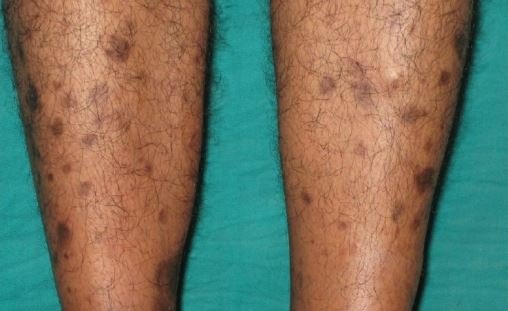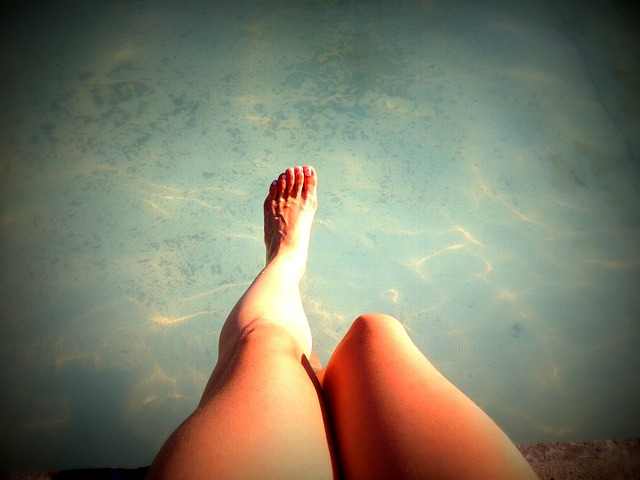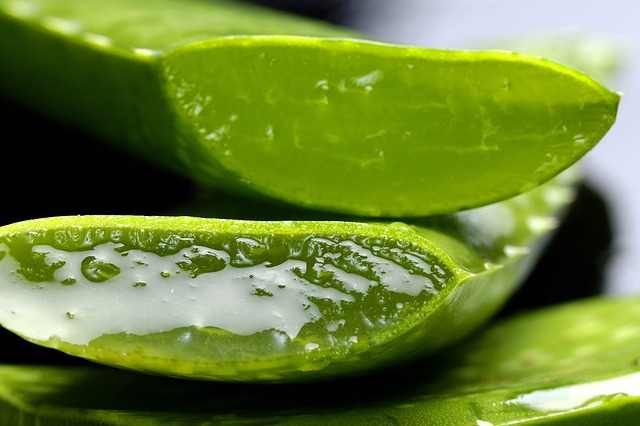Brown spots on legs are age spots that are bound to be found on your legs in the course of time. They appear mostly on the parts that have seen so much exposure to the sun. The little dots can appear on ankles, lower legs and even on feet.
Small brown dots can be small as a freckle or even as big as more than a centimeter in diameter. There are different types and colors of spots on the skin, white dark or brown. The whole mark is that the spots are caused by the concentration of color pigments in the skin.
Why the color difference and why brown? When the sun heats up the skin which is made up of melanin, the skin cells produce melanin that goes to the top of the skin to act as a barrier from the ultraviolet rays. When heated, the pigment it is activated and it tries to protect the other parts of the body from the harmful rays. As a result, the pigment darkens and the skin color changes thereafter.
Hyperpigmentation takes place when there is excessive formation of deposits of pigments. They in return create patches of different sizes that are darker that the surrounding skin. The brown spots are therefore products of hyperpigmentation.
What causes brown spots on legs?
The most common causes of brown spots on the exposed surfaces of the body include;
- sun exposure
- aging
- genetics
- stress
- pregnancy
- vitamin deficiency
- weak liver functioning
The patches are harmless although you may consider them unattractive.
Diabetes
A condition that is called acanthosis nigricans is capable of causing tan or brown arrears to appear on the legs. This condition preceded diabetes. If you are already diabetic, then the presence of red spots on your legs is diabetic dermopathy. It normally appears on the front of your legs as small, light brown, scaly patches.
Diabetes can affect the small blood vessels of the body which supply the skin with blood. Changes to the blood vessels due to diabetes causes the skin to have conditions that is the diabetic dermopathy. The patches are at times called skin spots.
Age spots on lower legs
Age spots are sometimes called liver spots. They are normally found on those who have fair skin although everyone can get the spots. They appear on the parts of the body that have a lot of exposure to the sun.
See also:
Sun exposure

The reason as to why exposure to the sun leads to reddening of the skin in the sun exposed areas is because it leads to more production of cells called melanocytes that increase melanin pigment production. This pigment makes the skin to turn darker.
The other cause of brown spots could be leaky capillaries in the lower leg. When the capillaries get some irritation then the red blood cells will get reabsorbed back in the body but the iron in the cells will remain. This causes an iron tattoo.
Little scaly light brown dots on ankles and feet
Rashes can appear on one or both of your ankles and may or may not continue up the leg onto the foot. The rashes that are found on the ankle might have an origin from the upper part of the leg. The rush on the ankle can appear to be;
- Bumpy
- Scaly
- Raised
- Flat
Purple dots on legs can be part of the rash as can be blister or sores in and around the region.
The rash on the lower leg may have different patterns and even colorations. An ankle rash however could be bright red or dark purple or even brown. The causative agents for the ankle rashes may vary greatly from the following;
- insect bite
- contact with poisonous plant infections
- autoimmune disorders
The seriousness of the ankle spotting dictates whether or not it needs attention.
Vein problems could also precipitate the discoloration of the skin on the entire leg and the ankle as well. Vein disorders develop because of one way valves in the veins have stopped working. As a result, superficial veins, vein walls weaken and stretch then malfunction then pressure in the lower leg increases due to downward flow of blood.
The high pressure along with the weaknesses in the wall of veins cause fluid to seep out of the veins, resulting in swelling in the feet, ankles and legs.
In regard to formation of brown spots, it follows that they develop as red blood cells within the blood release iron into the tissues. This brings about a small brown spot that eventually results in the entire ankle or lower leg becoming brown, a condition called hyperpigmentation. Just in case the skin changes color to red, it is called dermatitis.
In the process of the skin becoming discolored, the skin may become thickened, become hard and even leathery. This condition is normally referred to as lipodermatosclerosis.
How to get rid of brown spots on legs
First and foremost, it is very important to prevent the underlying cause of the condition before you consider having it cured. The best way to prevent this is to limit the exposure of the affected area to too much sun. This will save you a great deal.
At times, the laser treatment among other solutions might be so costly for you. It is also workable to use the high zinc sunscreens when you go outside even if it is for a very short time. This prevents the harmful effects of the ultraviolet rays and in return saves your skin.
There are also non-prescription fade creams that have 2 percent hydroquinone. They may help to fade and reduce the appearance of the areas of hyperpigmentation. On the other hand, prescription creams have twice as much strength as the non-prescription ones.
The other idea is to wear long pants that will protect you from the scratches and scrapes. Also shave with a lot of care in order to avoid nicking or cutting your legs. Always do the following;
- use a clean
- sharp razor
- shaving gel or lotion in order to prevent irritation during shaving
- shave in the direction of your hair and not against
Laser treatment for brown blotches on legs
In this technique, intense pulsed light devises and Q-switched lasers are commonly used to lighten up the skin areas that have been darkened by the red spots. For blotches, lasers and intense pulsed light devices remove the skin by selectively targeting the melanin and the melanocyte, leaving the other cells of the skin untouched.
The uniqueness of the apparatus makes it to be rendered the safest and most effective treatment of choice for removing brown sun damage spots from the skin. The process is quick and requires no anesthesia to be performed. It only needs one or two sessions then it will achieve its intended role.
Home remedies
1. Buttermilk
The first option that you could basically think of is buttermilk. Buttermilk contains lactic acid that helps exfoliate the skin to remove blemishes and brown spots without drying out your skin. The procedure simply entails:
- Applying buttermilk on your brown spots using a cotton ball. Leave it on for a few minutes before washing the area with water. If you have oily skin or acne, you can also add some lemon juice to the buttermilk.
- The other option is to mix four teaspoons of buttermilk and two teaspoons of tomato juice together and then apply this mixture on the affected skin.
- Repeat either of these remedies once or twice daily until you are satisfied with the results.
2. Castor Oil
The other substitute would be castor Oil. It has strong healing properties and can be used effectively to get rid of brown spots or age spots. Along with castor oil, you can use vitamin E oil, coconut oil, olive oil or almond oil to remove brown spots.
- Use a cotton ball to apply castor oil on the affected area.
- Gently massage the area for a few minutes.
- Leave it on for a few hours and then wash it off.
- Do this once in the morning and once at night to help the brown spots fade and make your skin tone even.
A great choice will be 100% Pure Organic Cold-Pressed castor oil by Sky Organics (Check price on Amazon)
3. Apple cider vinegar
Apple cider vinegar is yet another effective remedy for a number of skin problems including brown spots. It will help dry out and fade the spots faster. The procedure is as follows:
- Dilute some apple cider vinegar with an equal amount of water.
- You can also add some honey.
- Apply this solution on your brown spots and wash it off after a few minutes.
- Do this once daily for a few days or until you get positive results.
- You can use straight apple cider vinegar too, but it may sting.
- The other alternative is to mix one-half teaspoon of apple cider vinegar in a few tablespoons of orange juice.
- Apply it on the affected area and leave it on until it dries completely before washing it off. Repeat once or twice daily for four to five weeks.
4. Aloe vera

Aloe vera has healing properties and aids skin regeneration. So, it is excellent for getting rid of brown spots, especially when caused by sun exposure. To finalize the cure:
- Gently rub fresh aloe vera gel on the spots. Leave it on for about 30 minutes before washing the area with cold water.
- Repeat twice daily and within a month you should notice improvement.
If fresh aloe vera gel is not available, you can opt for aloe vera juice that you can readily buy from the market.
We also recommend organic cold pressed Aloe Vera gel (Check price on Amazon)
5. Sandalwood
Sandalwood is an anti-aging agent and an antiseptic that can helps reduce hyperpigmentation and get rid of brown spots.
You can make homemade pack with two tablespoons of sandalwood powder, two teaspoons of rose water, and one teaspoon each of glycerin and lemon juice. Apply this pack on the spots and allow it to dry naturally. Use cold water to wash it off. Repeat a few times a week until your brown spots disappear.
orange juice
Another option is to add one tablespoon of orange juice, one teaspoon of lemon juice and the contents of two vitamin E capsules in two tablespoons of sandalwood powder. Mix it well and then apply it on your face. Leave it on for about half an hour before washing it off. Do this a few times a week until you see improvement.
Also, massage the affected area with a few drops of sandalwood oil mixed in one tablespoon of olive oil or almond oil, daily before going to bed and leave it on overnight to interact with the spot. This gives it enough time to fight the underlying causes.
6. Papaya
Papaya contain certain enzymes and alpha hydroxyl acids present in papaya can help exfoliate your skin and reduce age spots, skin blemishes, acne and other skin problems. It will also give your skin a cleaner and brighter look.
- Rub one tablespoon of fresh grated papaya on the brown spots.
- Leave it on for about 20 minutes before washing the area with lukewarm water.
- Repeat twice daily until the brown spots fade away.
Very stubborn or large discolored areas of your legs necessitate thee need for professional treatment. Your dermatologist may be required to recommend the use of chemical peels and microdermabrasion. If the pigments are so disturbing and can’t go away, then you should consider visiting a professional for better advice and advanced treatment. This is because it could be an indication of a more serious condition.
Age related spots should however not be a great bother because they are part and parcel of the normal aging process that you are bound to go through at some point in your life. They are part of body physiology and therefore you should not be worried much about them.
References and Sources
- http://www.everydayhealth.com/skin-cancer/melanoma-or-age-spots-how-to-tell-the-difference.aspx
- http://www.mnveincenter.com/news-articles/2014/09/brown-spots-near-ankles/
- http://www.livestrong.com/article/313361-skin-discoloration-on-the-legs/
- http://www.livestrong.com/article/148808-treatments-for-brown-spots-on-the-skin/


